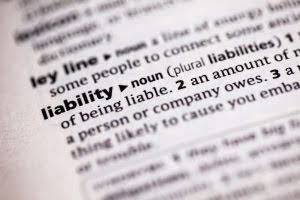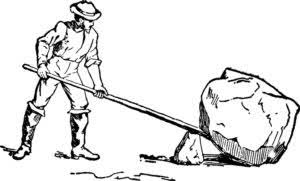
An accurate sales forecast helps manage cash flow, optimize resource allocation, and support strategic planning for organizations usually use only one method for forecasting sales. future growth. Its built-in sales forecasting leverages historical data and predictive analytics to accurately forecast future sales. It provides real-time updates and actionable insights to set realistic targets and plan resources effectively. Advanced statistical models might require specialized software and expertise. Therefore, consider your budget and resources when evaluating various sales forecasting methods.
- Let’s explore the most common reasons behind failures in sales forecasting and how to overcome them using appropriate sales forecasting methods and tools.
- The opportunity stage forecasting model predicts that a $8,000 deal at the relationship-building stage has a 45% chance of closing.
- Pay close attention to policy changes, as they can affect sales forecasting.
- Salespeople tend to be optimistic about what they think they can sell and may overestimate future sales.
- A major challenge with sales forecasting methods is that many of them are based on some form of subjectivity.
Company
- Many modern businesses have realized that going it alone just isn’t realistic in terms of scalability and precision.
- By identifying and analyzing these variables, you can create a predictive model that estimates future revenue based on historical data.
- This method is often used in historical forecasting to predict future sales based on past performance.
- Salespeople are more accurate in their near-term sales estimates, as their customers are not likely to share plans too far into the future.
- You may find that leads that requested a demo closed at $3000 per customer, while the leads from paid advertising closed at $1000 per customer.
- Consumption-based forecasting focuses on predicting future sales based on current consumption patterns.
While initially managed by sales leaders in smaller businesses, it transitions to specialized teams as organizations scale. The sales and marketing teams must work together to accurately identify the source of each lead and the predicted time to closing. Historical forecasting works well for organizations leaning https://www.bookstime.com/articles/government-and-nonprofit-accounting toward quantitative methods of sales forecasting. If your company has accurate historical sales data over a lengthy time period, historical forecasting can yield accurate results if no other factors in your sales process or lead funnel have changed.

How sales leaders can improve sales forecasting accuracy: 10 foolproof methods
Accurate forecasts help businesses allocate resources, improve sales forecasting accuracy, and adapt quickly to real-time changes in the market. This forecasting process is vital for businesses to anticipate future revenue, enabling strategic planning, resource allocation, and improved sales performance. Accurate sales forecasting helps businesses stay ahead of market fluctuations and ensures they make informed decisions. Time series analysis is a sales forecasting method that uses historical sales data to identify patterns, trends, and seasonality over time.
Forecasting Methods

Try it for free today and discover how it can empower your sales rep, sales manager, and the entire sales team to achieve unparalleled growth. The most accurate forecasts are typically combinations of different variables and come under multivariable forecasting. For example, how might your forecast change if your competitors react strongly to your strategy? All of these factors will influence sales, so the smart executive considers multiple scenarios.
- For any business to succeed, it must use its resources (human capital, financial assets, equipment, etc.) sustainably.
- Companies then buy the surveys from the research companies or do their own surveys to use as a starting point for their forecasting.
- It enables businesses to anticipate market shifts and prepare strategically for future challenges.
- What sold the previous month could not account for the effects of the program.
- Combining bottom-up forecasting with top-down approaches can provide a balanced perspective, incorporating strategic and operational insights.
- But the right method will only get you so far if you don’t have tools that offer transparency, reliable data, and the ability to fix potential issues before it’s too late.
- The forecasted sales will be valued at 11,000 euros for the current quarter.
Even accurate data can lead to inaccurate forecasts if it is irrelevant or outdated. This issue is common among companies relying on spreadsheets for sales forecasting, as these tools often lack real-time updates and integration with CRM systems. Consistently missing sales projections creates unpredictability and reduces confidence in future forecasts. This uncertainty often forces businesses to prioritize managing cash risks over growth initiatives, such as scaling teams, investing in innovation, or experimenting with new sales strategies. It involves setting strategic sales targets, estimating the resources needed to achieve those goals, and preparing for various scenarios that could impact future revenue. Sales planning often includes what-if analyses to simulate potential market changes, shifts in sales performance, or other influencing factors.


Sales forecasting is the process of estimating and predicting the total revenue or number of deals you will close in the future based on past data. But forecasting with sales forecasting software and CRMs like Salesforce comes with lots of challenges. Multivariable analysis forecasting involves considering multiple variables simultaneously to predict sales outcomes. It uses statistical techniques to analyze the impact of various factors on sales, allowing for a more comprehensive and contra asset account accurate forecast. Consumption-based forecasting relies on analyzing past consumption patterns to anticipate future customer demand for products or services.
